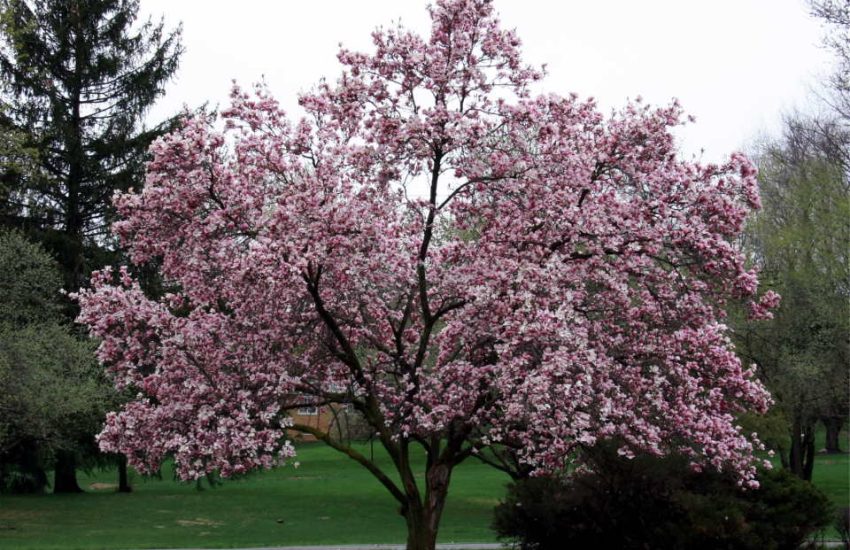Crape Myrtle Tree: Plant, Grow & Care
Now that the summer is closing in, we all want to go outside and enjoy some time in the sun, preferably in our beautiful gardens. Who does not love just spending time with friends or family in a colorful and pretty garden? Maybe you are new to gardening and want a beautiful garden that you can spend time in, or maybe you love gardening trees, colorful bushes, and flowers, so you want to find different types of them to make your garden even prettier.
Either way, this article is the right place to learn about a super resistant but gorgeous tree that you can easily plant in your garden. Yes, we are talking about Crape Myrtle trees. You will learn when to plant a Crape Myrtle tree, how to plant a Crape Myrtle tree, and how to keep it healthy and pretty.
Crape Myrtle trees (also known as the crepe myrtle tree) provide you with flashy summer colors all year round. They also have colorful foliage in fall and attractive exfoliating bark in winter. They have several sizes, from dwarf varieties to towering trees, and they also have many color options to choose from.
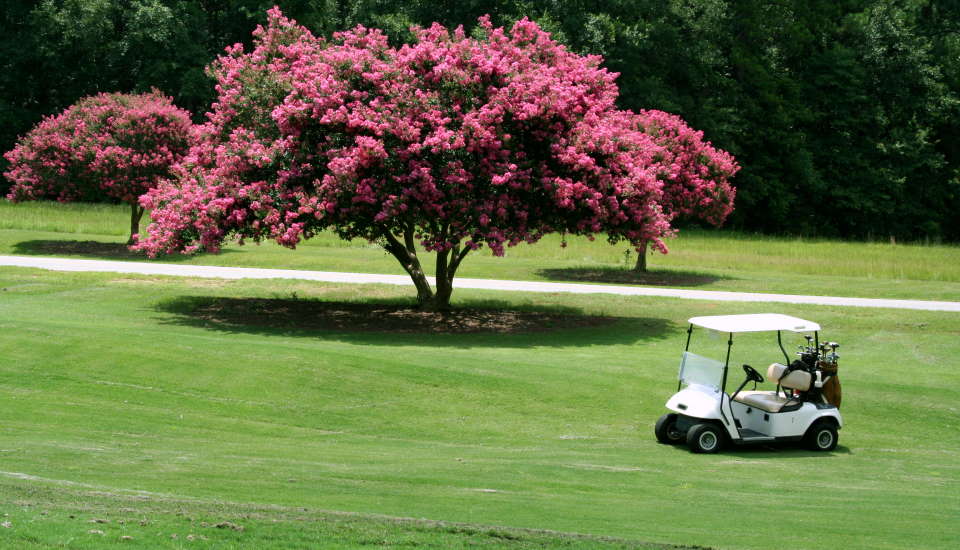
They have deep shades like red and purple or different ones like the Hopi crape myrtle tree, and they also can be grown as single and multi-trunk specimens. You could find bright colors like red or purple or orange, or if you like softer pinkish colors, you could choose the Hopi crape myrtle tree. Thanks to all these options, it’s super easy to find the type of color that matches your liking or your garden.
Crape Myrtles are shrubs or small trees most commonly planted in the South. They are drought and heat-resistant. In addition to their sturdiness, they have the loveliest summer flowers that are fascinating. Their ability to withstand harsh conditions and good looks make them a top choice for easy gardening in the hotter regions of the country. Recently plant breeders have been working on developing even harder forms to make it possible for northern planters to plant and care for these beautiful trees. So, they are much more common and widely planted.
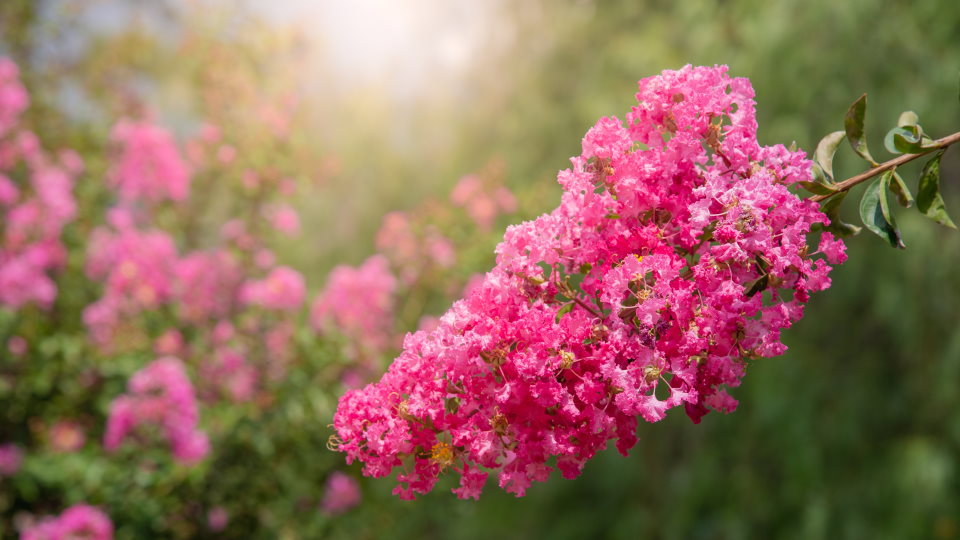
History of Crape Myrtles
The most common crape myrtle is originally native to China and Korea. It’s originally called “the Lilac of the South.” In 1790 after the American Revolution, André Michaux brought the plant to Charleston, South Carolina. He later started to grow these plants in his garden outside Charleston, which was later distributed across the city. Because of its characteristics, the plant thrived in the warm climate, becoming an important symbol of summer in the South.
Crape Myrtles are known as Lagerstroemia to botanists and have around 50 wild species through India, Asia, Nothern Australia, and islands in the Pacific Ocean.
Planting
Crape Myrtles are ideal plants if you are looking for a diverse spectrum of colors that will bloom continuously throughout the summer and fall. Crape myrtle trees are available in various sizes and forms, so you can easily choose the size or the color that matches your tastes or the size that is suitable for your garden. It can easily grow in most soils, and the plant only asks for a place that gets a good amount of daily sunshine. The only thing you should be worried about is if your living area is suitable for the crape myrtle tree- more about that later.
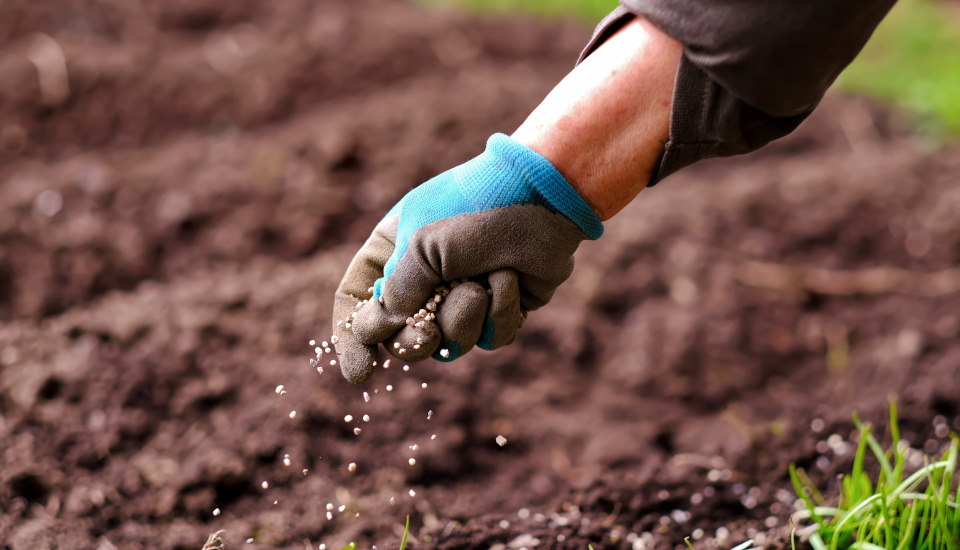
When Should You Plant a Crepe Myrtle Tree?
Planting the Crepe Myrtles from late fall to early spring is the best growth time. People plant their trees in summer as they see and choose the tree in summer. And actually, that can work too. Even if it’s not the best time to plant the tree, if you water your tree carefully and keep an eye out for its thirst levels, you can also grow them in the summertime.
How to Plant
Now, how to plant a Crape Myrtle Tree? Yes, it’s quite a resistant and tough plant, but it doesn’t mean that you should not make a little effort to give your crape myrtle tree a head start in a quality and healthy life. If you have decided where to place your tree, you should dig over the area you are planning to plant the tree. Next, you should go to the full depth of the spade and turn the soil over, and do not forget to remove the weeds and their roots.
You do not have to worry about the stones if they are not bigger than your clenched fist. You could also add some organic material to improve root development for a healthier plant. That could be either garden compost, manure, or rotted leaves. If you do not have access to any of these materials, you also could get some peat moss, as it’s a lot easy to find. Next, you can mix a big bucket of your organic material into the soil you plan to plant the tree into planting.
You should water the soil really well before planting, ideally right before the day you’re planning to plant. Next, remove the pot, and if you see many tight roots clumped like a ball, you should cut from top to bottom (not more than an inch deep) in three different places. This is a viable solution even if your crape myrtle tree is in full leaf. You do not have to worry about hurting it as you are helping the tree to easily spread its roots outwards into the surrounding soil so it can grow its roots even thicker.
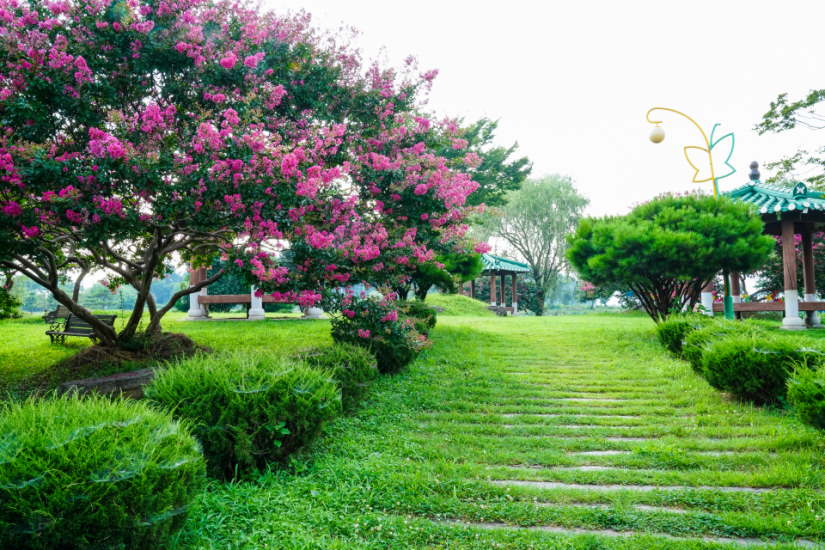
Planting Depth and Watering
Planting depth is also very important in planting a Crape Myrtle tree. This plant has relatively shallow roots, so it should not be planted very deep. You should dig a hole two or three times the width of your plant pot, but it should have the same depth. Once you have dug the hole, add soil and press the pot into the soil to ensure it’s firm and stable underneath your plant. Next, you can use your foot to push down the pot into the soil so there won’t be any air pockets in the soil, and your Crape Myrtle tree will be able to hold firmly to the soil.
After that, fill the hole with water all the way up and wait for it to drain the water. When the water is drained, you can place the rest of the soil, level it, and make it look neat and nice. You do not need to add more water; you can just mulch the roots with organic mulch. It should be 3 to 5 inches thick and cover the root zone. Mulch can help keep the water, and it also keeps the weeds out. And it helps to keep soil colder in the hotter times of the summer.
Crape Myrtles grow fast so that the root will reach the new soil in no time, and it will start to grow. Therefore, you won’t need a stake in the tree. It’s actually not good for crape myrtles to have a stake, as it will grow stronger and tougher if not held artificially.
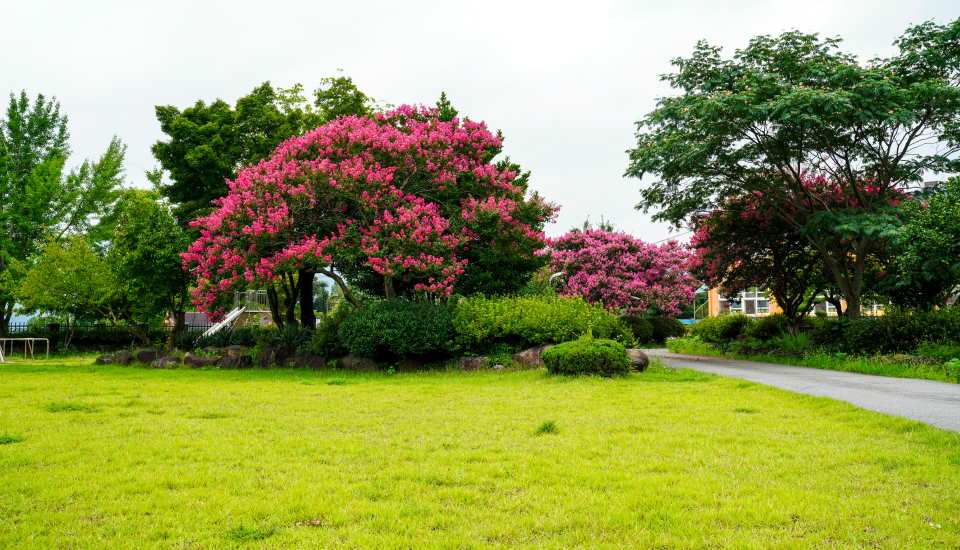
First Few Weeks
Yes, Crape Myrtle trees are tough and drought-resistant. But of course, it doesn’t mean that you can just plant it into a spot and forget about it. Like all other young plants and trees, they should be checked for water during their first growing season and given some fertilizers to help them grow healthier. You should water the young plants well once a week during the first growing season. If you plant them in summer, you should check them often to see if they’re dry because they tend to dry very quickly in hot weather, especially in sandy soil. After the first year, you can water your plant during extended drought periods. You can use these steps to keep your Crape Myrtle healthier.
Caring
Now that you have planted your Crape Myrtle Tree in your beautiful garden, you want to know how to keep it healthy and pretty. Yes, crape myrtle trees do not need much care, but to get the most from them and to have them look their best all the time, you can use these simple care methods.
Fertilizing
You can use fertilizer for the younger years of your plant to encourage them to grow and become well established. In the first years, you can use liquid fertilizer as best for this plant; however, in later years, you can switch to granular fertilizer as it’s more suitable. Granular fertilizer can be sprinkled over the munch.
If your plant is growing and blooming well, you can skip the fertilizer phase as it can do worse than good to your Crape Myrtle tree. If you want to grow your tree all organic and natural, you can use soya-bean meals, cotton-seed meals, or alfalfa pellets to boost them, but still, using only rich mulch will be enough too.
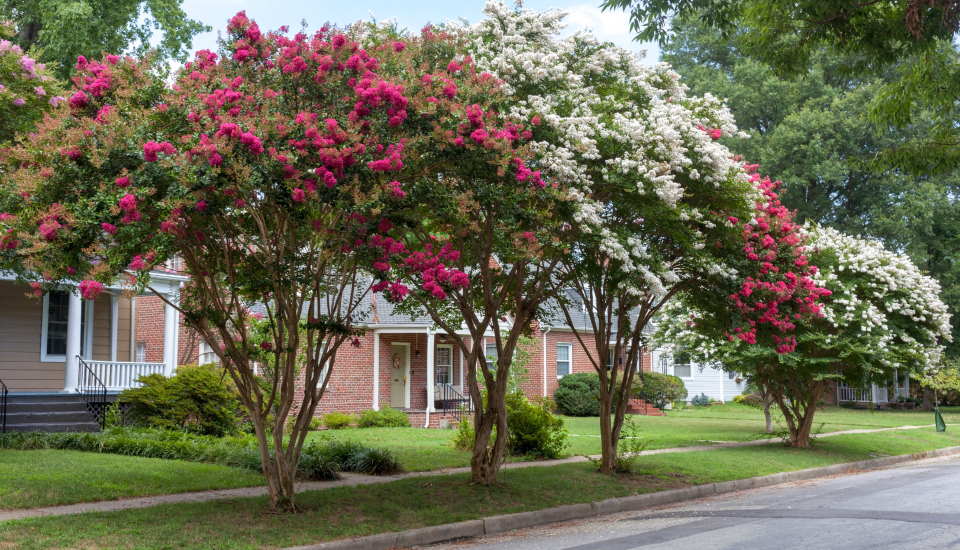
Pruning
If you choose your variety appropriately, you probably won’t need much pruning with your Crape Myrtle Tree. Pruning should be done before the beginning of the new crop, so if you cut a new growth, you may not get any flowers. You can remove thin or weak stems to have a good frame of strong branches, and if you want more like a tree-formed plant, you could remove lower branches as the bush grows upwards and leaves fewer stems on your tree. Finally, you can remove new shoots forming on the trunk to have a bare trunk that allows you to see the beautiful bark of the tree easily.
To have a more bushy formed tree, you can cut the last few inches off the branches to get more side shoots. You should probably do more detailed research about fertilizing and pruning to determine what works the best for the type of Crape Myrtle Tree you have.
Diseases
Now you have a fully grown-and mesmerizing Crape Myrtle tree in your garden. The tree is blooming with its beautiful colors, and it’s quite the sight in your garden. Yes, it’s a plant that’s relatively easy to maintain. They are hardy and probably will not have that much of a serious problem in their lifetime. But there are still a few diseases you need to be careful of if you want to grow a healthy tree.
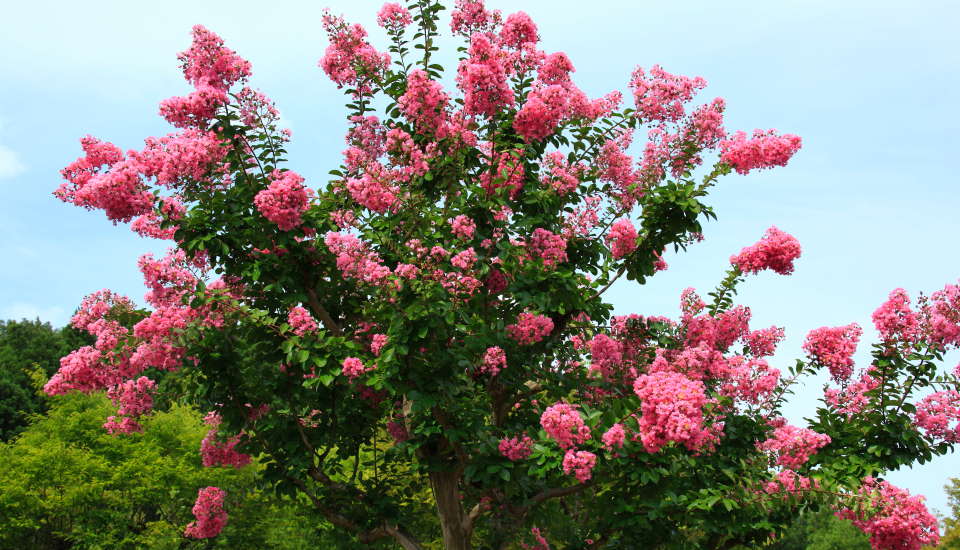
Leaf Spot Fungus
Commonly found in Deep South, this disease causes brown spots on the leaves during warm and wet weather. As it escalates, the leaves fall, and the tree will produce fewer leaves; therefore, your tree will look less attractive. To control this disease, you need a chemical spray that contains thiophanate-methyl. You need to ask your local garden center for the spray and use it as soon as you find the brown spots. It is only necessary to spray during warm and rainy periods.
Flea Beetles
These are small metallic-colored insects that chew the edges of the leaves. Although they pose no serious threat to your tree, they should still need to be controlled.
Japanese Beetles
These more dangerous beetles are large bugs with a green head and a light brown back. They will eat the leaves of many plants, including your Crape Myrtle trees, and make them look like lace.
You should be careful about a few more diseases, like Powdery Mildew, Crape myrtle Aphids, etc. They are quite easy to treat, but you should keep an eye out for your tree and know the signs of the diseases to keep it healthy and beautiful.
Now you know the basics of how to plant a Crape Myrtle tree and how to take care of it. With little research, you can find the type of Crape Myrtle tree to your liking, and you can have a breathtaking garden.
You may also be interested in:
Hearts of Gold Redbud Tree : How to Grow & Care

